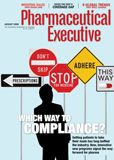All Aboard!
Bring customers back into the conversation
Every day, pharma brand managers, e-marketers, and executives are bombarded by industry leaders insisting that they jump on the Web 2.0 express. While the message is clear, no one quite knows where to get a ticket. As a result, resistance is high (to put it mildly). One pharma rep said that if she puts the words "Web 2.0" in a meeting invitation, nobody will show up. So what's it going to take for pharma to get on board Web 2.0 and depart from the "selling and telling" approach?
Perhaps the way forward is for pharma to look back. In 1999, Rick Levine, Christopher Locke, Doc Searls, and David Weinberger authored The Cluetrain Manifesto, a series of 95 theses offered as a primer on Internet marketing. "Through the Internet," reads the manifesto, "People are discovering and inventing ways to share relevant knowledge with blinding speed. As a direct result, markets are getting smarter—and getting smarter faster than most companies."
The Internet has forever changed the nature of business communication and marketing. Though Cluetrain's 95 theses were drafted almost 10 years ago, they still ring true. Here are a few that are particularly relevant for pharma.
Thesis 1: Markets are conversations Every day, millions of patients are participating in online conversations. Unfortunately, much of it is misinformed. One recent blog post from a bipolar patient blamed a leading treatment for "ruining [his] life." However, the impact of his bottle-per-day gin habit seemed lost on the many respondents who claimed they would immediately stop taking their medication for fear of similar side effects.
Thesis 2: Markets consist of human beings, not demographic sectors The industry does an impressive amount of research on its target patient populations (including gender, age, income and education levels, nationality) but doesn't know what it feels like to have the conditions they're targeting. For instance, does the maker of a fibromyalgia treatment know many sufferers complain that their clothes hurt? They would if they read the comments posted on many of the leading health forums. If a factor like that was used in a marketing campaign, the audience might think, "Wow, they get it."
Thesis 17: Companies are kidding themselves if they assume online markets are the same markets that used to watch their ads on television An online audience is looking for specific answers; they're not satisfied by smiling faces and a smooth voice-over. They don't want to read a highly edited patient story. They would, however, like to communicate with someone who has used the product
Thesis 29: Elvis said it best: "We can't go on together with suspicious minds" The public doesn't trust pharma, and the industry doesn't trust the public. Yes, there is the adverse event issue, but that's not the whole picture. Pharmas want to control the conversation about their brands. The trust issue has many origins, from misconceptions about product recalls to lack of understanding about profits and regulation. The best way to close the gap is open, unbranded communication.
Joining the Conversation
The first step is partnering with a Web provider, nonprofit, or similar organization that has a trusted following. Explore appropriate ways to address the dialogue in message boards. One solution might be to support the identification of a clinician who could participate in forums and message boards. The candidate would need to be independent—not a pharma KOL—and highly qualified to answer questions, and, when necessary, set the record straight. The dialogue cannot be controlled or reviewed by pharma, the expert has to win the trust of the audience, and ensure they've got the facts.
Pharmas can take advantage of the fact that Web providers have no requirement to report adverse events. They can develop a program that harvests the best conversations about a condition. The focus doesn't have to be on treatment; pharmas can focus on the experience of having the condition and how sufferers have overcome obstacles Those comments could be woven into a larger program sponsored by the company.
The program will resonate with the target audience and have a much higher chance of succeeding. The health consumer will recognize his/her own words, will embrace the program, and will want to interact and contribute. And there's no better way to capture a new customer.
Marjorie Martin is senior vice president, general manager, Everyday Health for Waterfront Media. She can be reached at mmartin@waterfrontmedia.com
The Misinformation Maze: Navigating Public Health in the Digital Age
March 11th 2025Jennifer Butler, chief commercial officer of Pleio, discusses misinformation's threat to public health, where patients are turning for trustworthy health information, the industry's pivot to peer-to-patient strategies to educate patients, and more.
Navigating Distrust: Pharma in the Age of Social Media
February 18th 2025Ian Baer, Founder and CEO of Sooth, discusses how the growing distrust in social media will impact industry marketing strategies and the relationships between pharmaceutical companies and the patients they aim to serve. He also explains dark social, how to combat misinformation, closing the trust gap, and more.
